In the spring of 1965, within weeks of 3,500 American Marines arriving in Vietnam, a 39-year-old Briton named Larry Burrows began work on a feature for LIFE magazine, chronicling the day-to-day experience of U.S. troops on the ground – and in the air – in the midst of the rapidly widening war. The photographs in this gallery focus on a calamitous March 31, 1965, helicopter mission; Burrows’ “report from Da Nang”, featuring his pictures and his personal account of the harrowing operation, was published two weeks later as a now-famous cover story in the April 16, 1965, issue of LIFE.
Over the decades, of course, LIFE published dozens of photo essays by some of the 20th century’s greatest photographers. Very few of those essays, however, managed to combine raw intensity and technical brilliance to such powerful effect as “One Ride With Yankee Papa 13″ – widely regarded as the single greatest photographic achievement to emerge from the war in Vietnam.
The following paragraphs – lifted directly from LIFE – illustrate the vivid, visceral writing that accompanied Burrows’ astonishing images, including Burrows’ own words, transcribed from an audio recording made shortly after the 1965 mission:
“The Vietcong dug in along the tree line, were just waiting for us to come into the landing zone”, Burrows reported. “We were all like sitting ducks and their raking crossfire was murderous. Over the intercom system one pilot radioed Colonel Ewers, who was in the lead ship: “Colonel! We’re being hit”. Back came the reply: “We’re all being hit. If your plane is flyable, press on”.
“We did”, Burrows continued, “hurrying back to a pickup point for another load of troops. On our next approach to the landing zone, our pilot, Capt. Peter Vogel, spotted Yankee Papa 3 down on the ground. Its engine was still on and the rotors turning, but the ship was obviously in trouble. “Why don’t they lift off?” Vogel muttered over the intercom. Then he set down our ship nearby to see what the trouble was”.
“(Twenty-year-old gunner, Pfc. Wayne) Hoilien was pouring machine-gun fire at a second V.C. gun position at the tree line to our left. Bullet holes had ripped both left and right of his seat. The plexiglass had been shot out of the cockpit and one V.C. bullet had nicked our pilot’s neck. Our radio and instruments were out of commission. We climbed and climbed fast the hell out of there. Hoilien was still firing gunbursts at the tree line”.
Not until YP13 pulled away and out of range of enemy fire were Farley and Hoilien able to leave their guns and give medical attention to the two wounded men from YP3. The co-pilot, 1st Lt. James Magel, was in bad shape. When Farley and Hoilien eased off his flak vest, they exposed a major wound just below his armpit. “Magel’s face registered pain”, Burrows reported, “and his lips moved slightly. But if he said anything it was drowned out by the noise of the copter. He looked pale and I wondered how long he could hold on. Farley began bandaging Magel’s wound. The wind from the doorway kept whipping the bandages across his face. Then blood started to come from his nose and mouth and a glazed look came into his eyes. Farley tried mouth-to-mouth resuscitation, but Magel was dead. Nobody said a word”.
In his searing, deeply sympathetic portrait of young men fighting for their lives at the very moment America is ramping up its involvement in Southeast Asia, Larry Burrows’ work anticipates the scope and the dire, lethal arc of the entire war in Vietnam.
Six years after “Yankee Papa 13″ ran in LIFE, Burrows was killed, along with three other journalists – Henri Huet, Kent Potter and Keisaburo Shimamoto – when a helicopter in which they were flying was shot down over Laos in February, 1971. He was 44 years old.
Over the decades, of course, LIFE published dozens of photo essays by some of the 20th century’s greatest photographers. Very few of those essays, however, managed to combine raw intensity and technical brilliance to such powerful effect as “One Ride With Yankee Papa 13″ – widely regarded as the single greatest photographic achievement to emerge from the war in Vietnam.
The following paragraphs – lifted directly from LIFE – illustrate the vivid, visceral writing that accompanied Burrows’ astonishing images, including Burrows’ own words, transcribed from an audio recording made shortly after the 1965 mission:
“The Vietcong dug in along the tree line, were just waiting for us to come into the landing zone”, Burrows reported. “We were all like sitting ducks and their raking crossfire was murderous. Over the intercom system one pilot radioed Colonel Ewers, who was in the lead ship: “Colonel! We’re being hit”. Back came the reply: “We’re all being hit. If your plane is flyable, press on”.
“We did”, Burrows continued, “hurrying back to a pickup point for another load of troops. On our next approach to the landing zone, our pilot, Capt. Peter Vogel, spotted Yankee Papa 3 down on the ground. Its engine was still on and the rotors turning, but the ship was obviously in trouble. “Why don’t they lift off?” Vogel muttered over the intercom. Then he set down our ship nearby to see what the trouble was”.
“(Twenty-year-old gunner, Pfc. Wayne) Hoilien was pouring machine-gun fire at a second V.C. gun position at the tree line to our left. Bullet holes had ripped both left and right of his seat. The plexiglass had been shot out of the cockpit and one V.C. bullet had nicked our pilot’s neck. Our radio and instruments were out of commission. We climbed and climbed fast the hell out of there. Hoilien was still firing gunbursts at the tree line”.
Not until YP13 pulled away and out of range of enemy fire were Farley and Hoilien able to leave their guns and give medical attention to the two wounded men from YP3. The co-pilot, 1st Lt. James Magel, was in bad shape. When Farley and Hoilien eased off his flak vest, they exposed a major wound just below his armpit. “Magel’s face registered pain”, Burrows reported, “and his lips moved slightly. But if he said anything it was drowned out by the noise of the copter. He looked pale and I wondered how long he could hold on. Farley began bandaging Magel’s wound. The wind from the doorway kept whipping the bandages across his face. Then blood started to come from his nose and mouth and a glazed look came into his eyes. Farley tried mouth-to-mouth resuscitation, but Magel was dead. Nobody said a word”.
In his searing, deeply sympathetic portrait of young men fighting for their lives at the very moment America is ramping up its involvement in Southeast Asia, Larry Burrows’ work anticipates the scope and the dire, lethal arc of the entire war in Vietnam.
Six years after “Yankee Papa 13″ ran in LIFE, Burrows was killed, along with three other journalists – Henri Huet, Kent Potter and Keisaburo Shimamoto – when a helicopter in which they were flying was shot down over Laos in February, 1971. He was 44 years old.
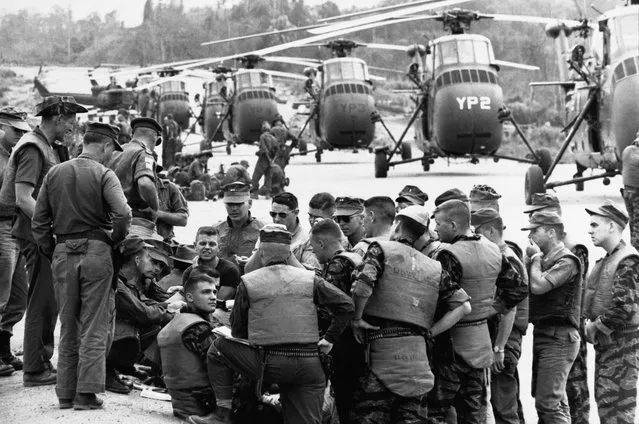
United Sates Marines Helicopter Squadron huddled at Da Nang in 1963 for the final briefing on a March 31, 1965, mission: to airlift a battalion of Vietnamese infantry to an isolated area about 20 miles away. (Photo by Larry Burrows/Time & Life Pictures)
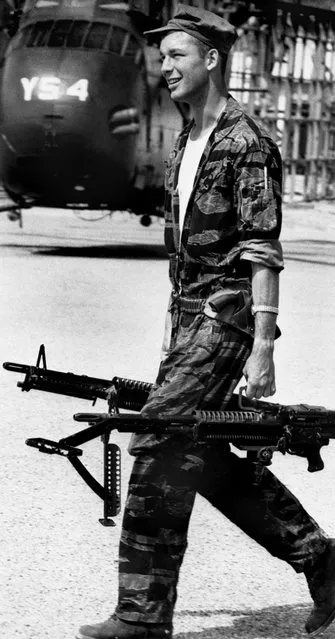
Yankee Papa 13 crew chief James Farley carries M-60 machine guns to the helicopter. (Photo by Larry Burrows/Time & Life Pictures)
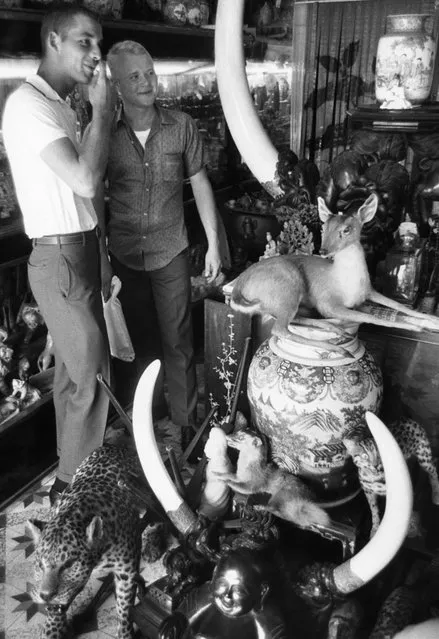
On the day before the mission chronicled in Burrows' photo essay, Farley, 21 years old, goes on liberty in Da Nang with his gunner, 20-year-old Pfc. Wayne Hoilien. (Photo by Larry Burrows/Time & Life Pictures)
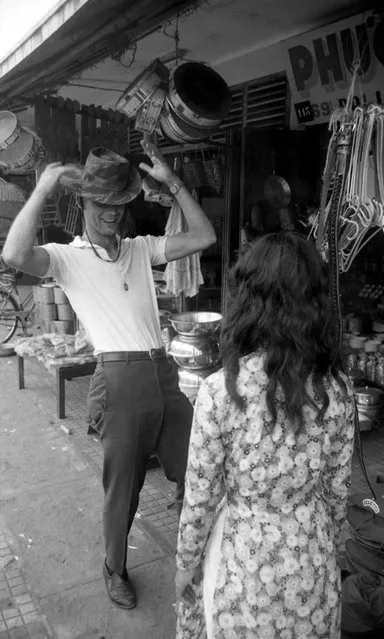
James Farley takes a fancy to a bush hat and models it in the street, Da Nang, March 1961. (Photo by Larry Burrows/Time & Life Pictures)

“Daybreak found them on the flight line”, LIFE reported. “Farley's last-minute checks were painstaking. At last everything was shipshape”. (Photo by Larry Burrows/Time & Life Pictures)
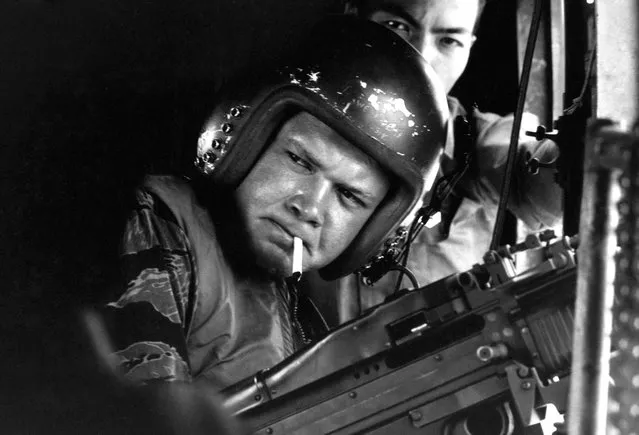
Inside Yankee Papa 13, one of 17 copters making up the mission, with the pilot and co-pilot buckled in at the controls, gunner Hoilien fits an ammo belt into his M-60 machine gun. (Photo by Larry Burrows/Time & Life Pictures)
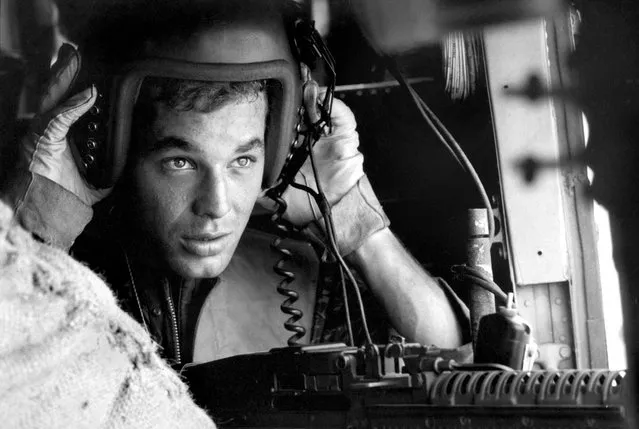
Lance Cpl. James C. Farley, helicopter crew chief, Vietnam, 1965. (Photo by Larry Burrows/Time & Life Pictures)
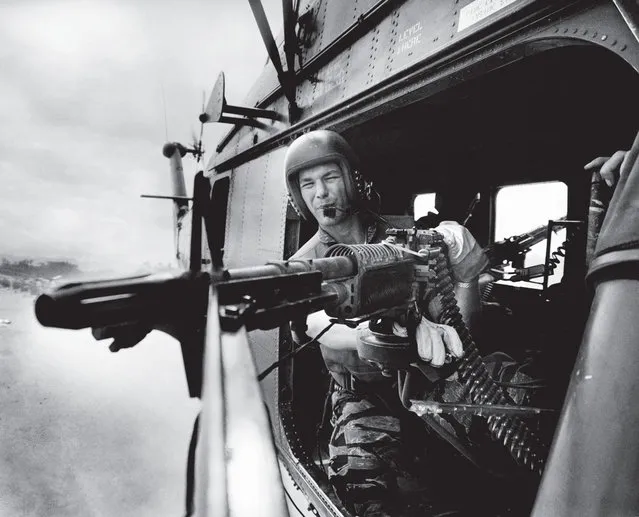
Man your battle stations: The crew chief of helicopter Yankee Papa 13, lance corporal James C. Farley, mans an M-60 machine gun during a mission near Da Nang, Vietnam on March 31, 1965. (Photo by Larry Burrows/Time & Life Pictures)
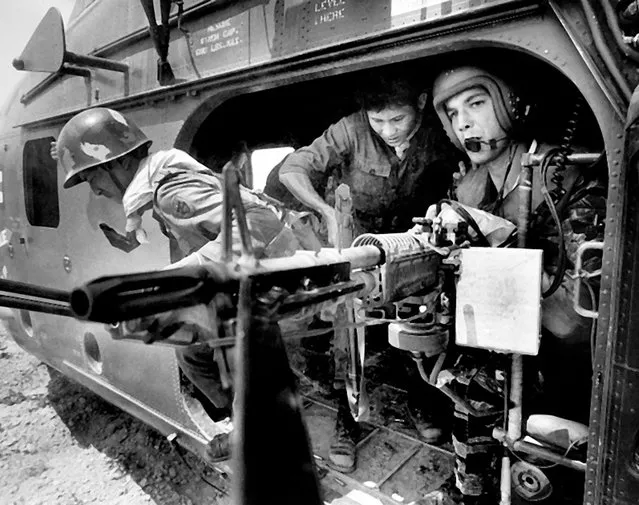
Yankee Papa 13 touches down and Farley holds his fire as South Vietnamese soldiers scramble past his machine gun to join their comrades. (Photo by Larry Burrows/Time & Life Pictures)
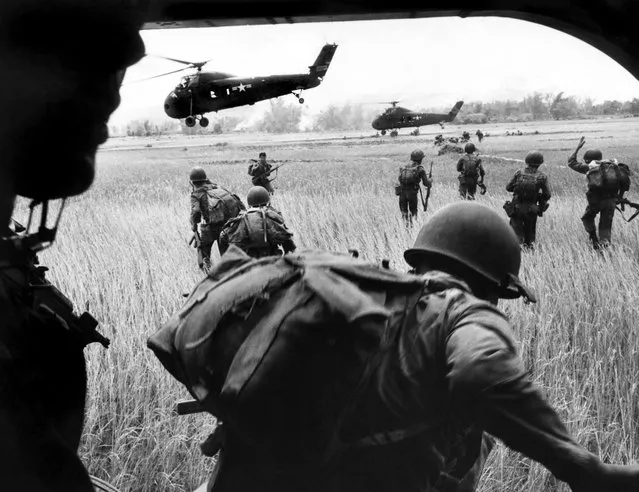
The view from inside Marine helicopter Yankee Papa 13, Vietnam, March 1965. (Photo by Larry Burrows/Time & Life Pictures)
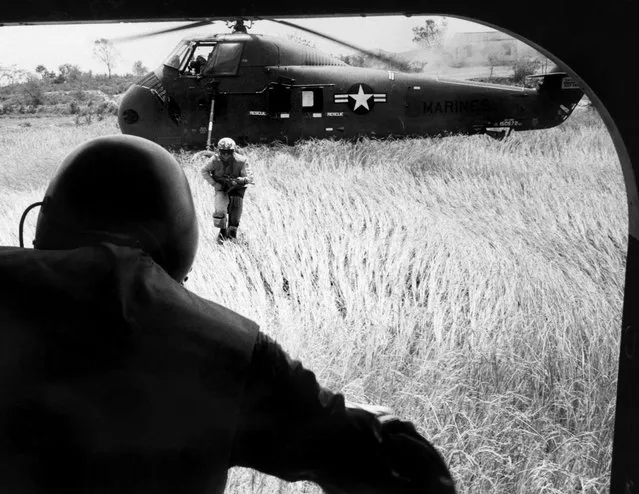
“From the downed YP3 in the background, the wounded gunner, Sergeant Owens, races to Yankee Papa 13, where Farley waits in the doorway”. (Photo by Larry Burrows/Time & Life Pictures)
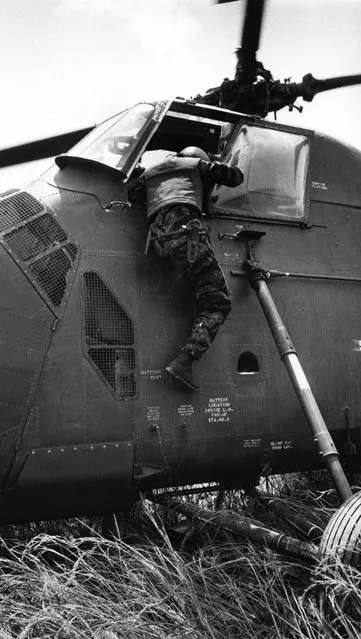
“In the cockpit of YP3 we could see the pilot slumped over the controls, Burrows recalled shortly after the mission, his words transcribed from an audio recording and published alongside his own pictures in LIFE”. (Photo by Larry Burrows/Time & Life Pictures)
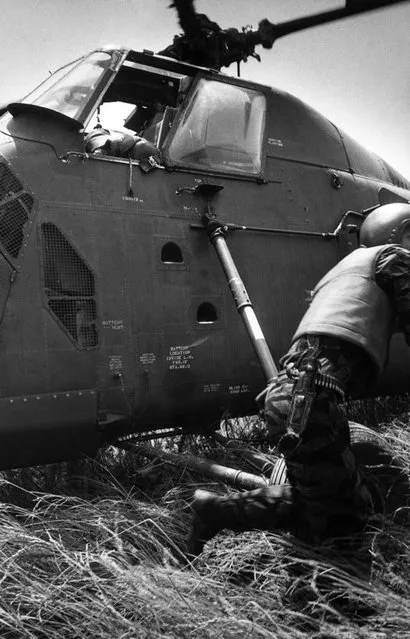
“Farley switched off YP3's engine”, Burrows said. “I was kneeling on the ground alongside the ship for cover against the V.C. fire. Farley hastily examined the pilot. Through the blood around his face and throat, Farley could see a bullet hole in the neck. That, plus the fact the man had not moved at all, led him to believe the pilot was dead”. (Photo by Larry Burrows/Time & Life Pictures)
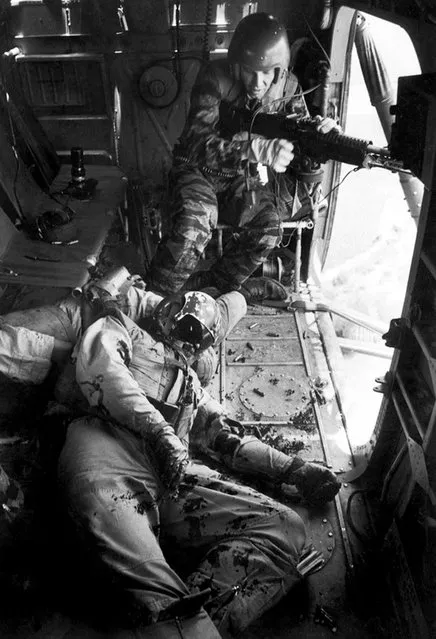
“Farley, unable to leave his gun position until YP13 is out of enemy range, stares in shock at YP3's co-pilot, Lieutenant Magel, on the floor”. (Photo by Larry Burrows/Time & Life Pictures)
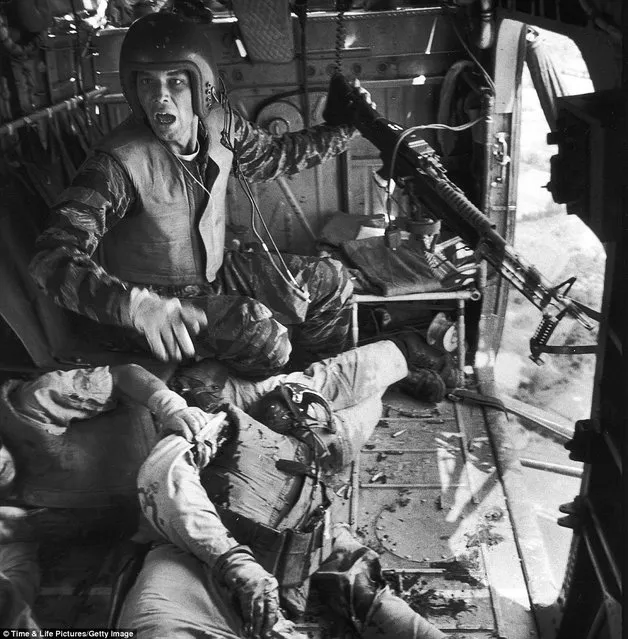
“Somebody help: James C. Farley (left) with a jammed machine gun shouts to crew as wounded pilot James E. Magel lies dying beside him”. (Photo by Larry Burrows/Time & Life Pictures)

“Farley opens a first-aid kit to apply to Magel's wound as Hoilien watches Owens, the wounded gunner (with dark glasses), slumped in the rear”.
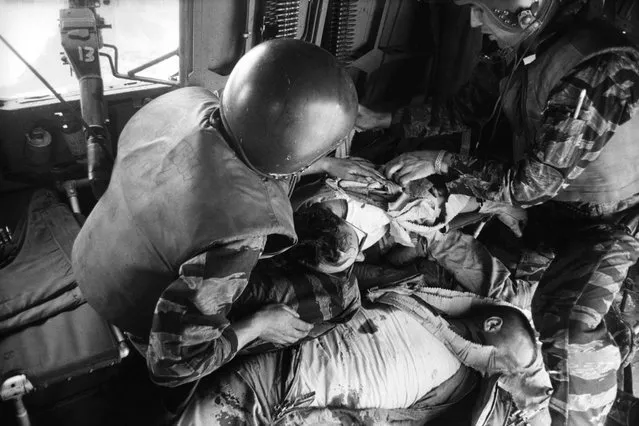
“The other wounded man, Sgt. Billie Owens, his left shoulder smashed by a bullet, lay in shock against the bulkhead”, Burrows said. “He was watching, but his sunglasses hid any expression his eyes might have shown”. (Photo by Larry Burrows/Time & Life Pictures)
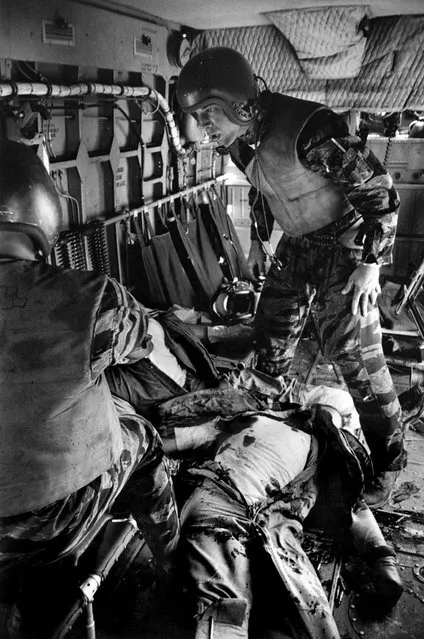
Exhausted by the strain, Farley stands over Magel's body while Hoilien (back to camera) tries to comfort Owens. (Photo by Larry Burrows/Time & Life Pictures)
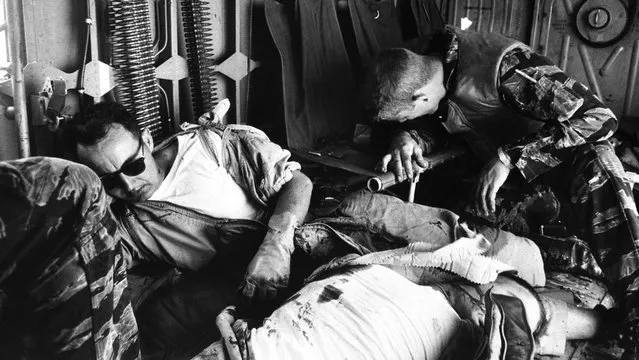
“Suddenly”, Burrows remembered, “at the doorway of the chopper, Farley began cursing. Then he broke into tears, first trying to cover his face from the others and then not caring who saw him”. (Photo by Larry Burrows/Time & Life Pictures)
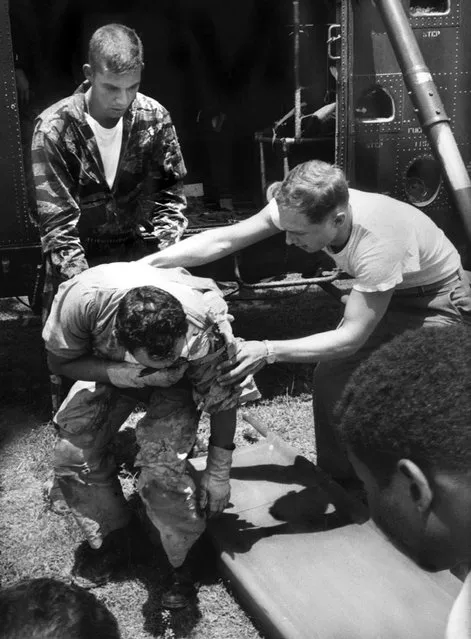
Back at Da Nang, wounded Sergeant Owens is eased out of the copter by Farley and a fellow Marine. (Photo by Larry Burrows/Time & Life Pictures)
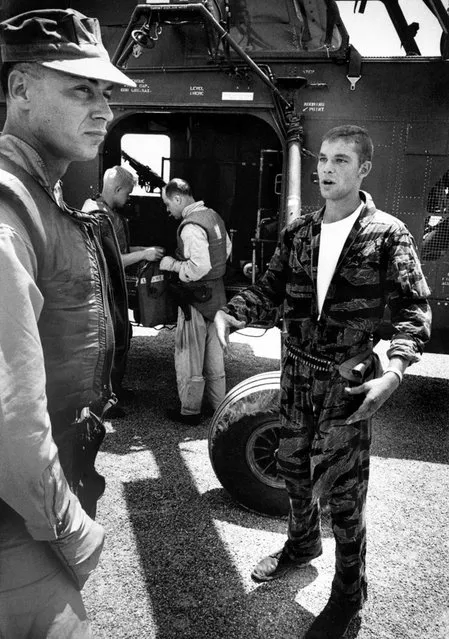
Farley talks to his own pilot, Captain Vogel, about the pilot who had to be left behind in YP3. “If we had stayed another 10 seconds under those V.C. machine guns”, Vogel said, “you or us would never have got out of there”. (Photo by Larry Burrows/Time & Life Pictures)
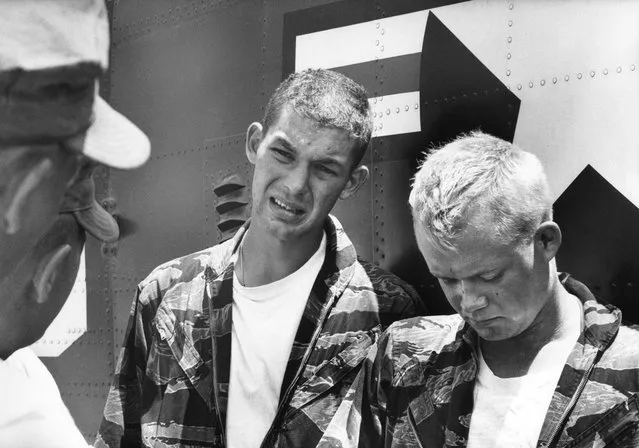
Farley and Hoilien, dead tired, linger beside their helicopter and continue to talk over the mission. (Photo by Larry Burrows/Time & Life Pictures)
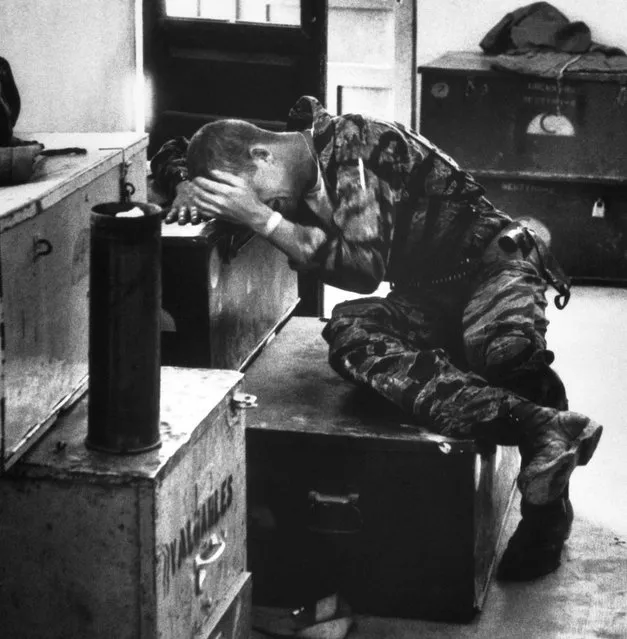
In a supply shack, hands covering his face, an exhausted, worn James Farley gives way to grief. (Photo by Larry Burrows/Time & Life Pictures)
07 Apr 2013 07:08:00,
post received
0 comments
